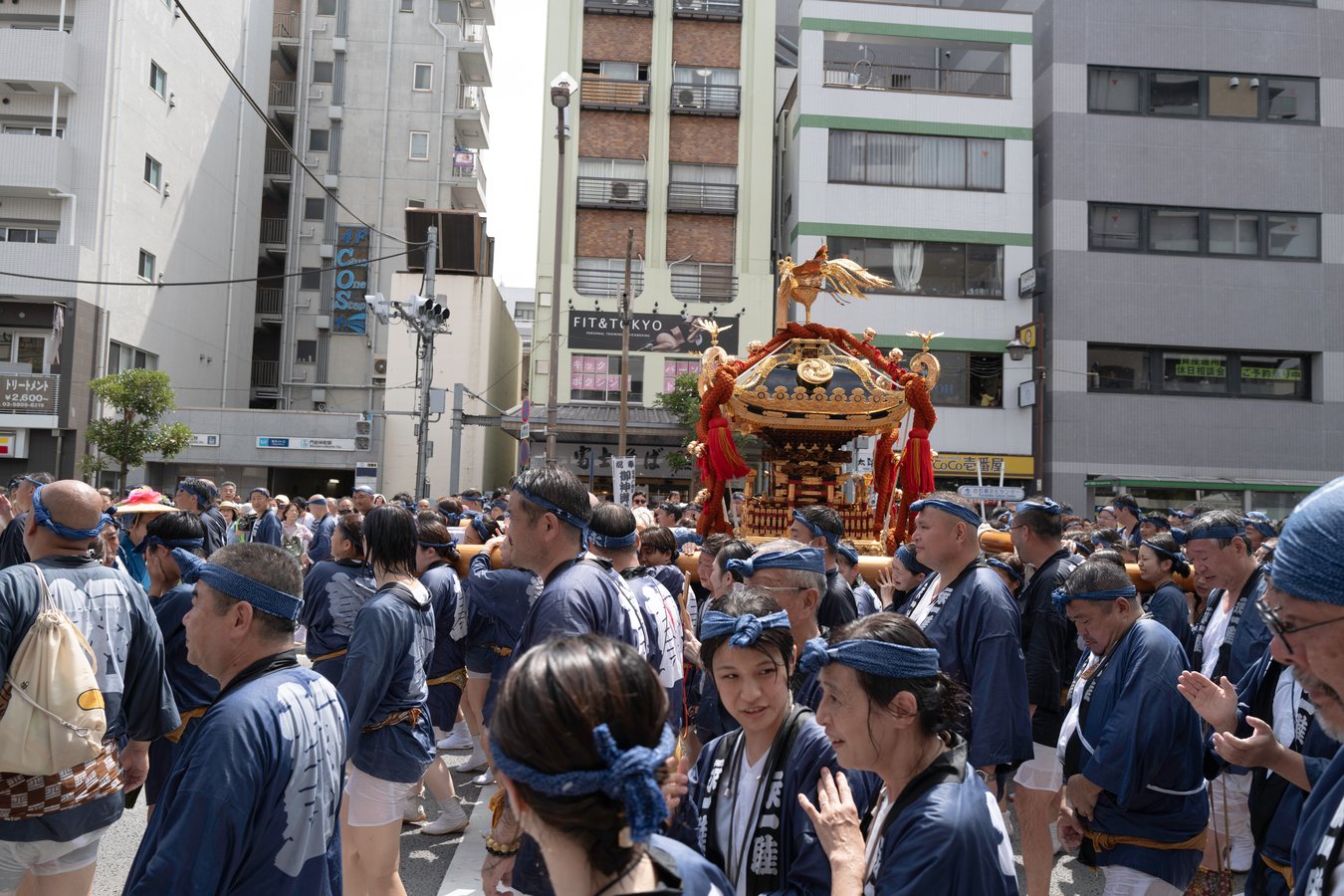Overview of the Fukagawa Hachiman Festival
The Fukagawa Hachiman Festival, also known as the Tomioka Hachimangu Shrine Festival, is held annually around August 15 in Koto City, Tokyo. Celebrated as one of the three great festivals of Edo, it features the unique tradition of participants splashing purifying water on mikoshi (portable shrines), earning it the nickname “water-splashing festival.” This joyous event brings together shrine-bearers and onlookers in a lively display of tradition and community spirit.
Festival Highlights
The festival’s centerpiece is the main parade (連合渡御), held every three years, where over fifty mikoshi are carried through the streets while being doused with water. Other highlights include Geisha dances and performances of Kiyariuta, traditional songs that evoke the cultural essence of the Edo period.
Historical Roots
The Tomioka Hachimangu Shrine dates back to 1624, when a statue of Hachiman, the God of War, was enshrined on Eitai Island. Since then, the shrine has been a cornerstone of the Fukagawa community, hosting this vibrant festival that celebrates both spiritual and cultural heritage.
Monuments and Memorials
The shrine grounds feature several notable monuments, including the Monument of Fukagawa Strength, the Monument of Kiba Riding, and the Yokozuna Rikishi Memorial Monument, all of which highlight the area’s rich history. Visiting these sites adds depth to the festival experience, connecting attendees with Fukagawa’s historical legacy.
The Fukagawa Hachiman Festival is more than just a celebration; it’s a vibrant mix of tradition, history, and community, offering visitors a unique window into Tokyo’s cultural past and present.



